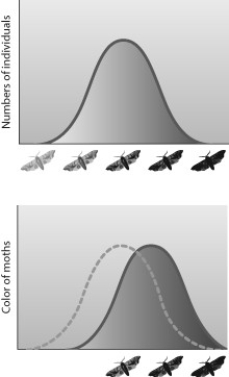When a scientist examined museum specimens of a particular moth species, she noticed that the variation in color was distributed as shown in the first graph. She was surprised because her data from current collections indicated the distribution of colors shown in the second graph. Which hypothesis about the cause of this shift in the range of genetic variation is the most likely to be supported by examination of the distribution of colors in a collection assembled at a time between that of the collection of the museum specimens and her current specimens? 
A) Darker moths tend to lay more eggs than light moths.
B) Birds prefer to eat lighter moths rather than darker moths.
C) The bark of the tree on which moths landed became darker over time.
D) Darker moths were more likely to survive and have offspring over time.
Correct Answer:
Verified
Q27: Researchers have created a robot that has
Q28: To be scientifically valid, a hypothesis must
Q29: The box numbered 2 represents which process?
Q30: Which of the following organisms belongs to
Q31: Which statement about ecosystems is false?
A) Energy
Q33: Watching salt crystals form as ocean water
Q34: Researchers set up a study to determine
Q35: Which level in the hierarchy shown is
Q36: Basic science discoveries often lead to the
Q37: Researchers have created a robot that has
Unlock this Answer For Free Now!
View this answer and more for free by performing one of the following actions

Scan the QR code to install the App and get 2 free unlocks

Unlock quizzes for free by uploading documents